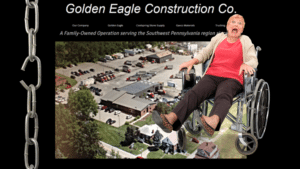How To Move Poor-Selling Products On Your Store (3 Easy Tips)
Slow-moving stock takes up valuable space in your warehouse, and you’re not seeing any return for the money you’ve invested in it. It will happen to every retailer at some point, but it’s important to find ways to get these products out the door and learn from your mistakes.

No matter how well you plan out your inventory purchases, research new products, and forecast consumer trends, there’s always going to be a few products that you just can’t sell or you’ve ordered too many of. Slow-moving stock takes up valuable space in your warehouse, and you’re not seeing any return for the money you’ve invested in it. It will happen to every retailer at some point, but it’s important to find ways to get these products out the door and learn from your mistakes.
We take a look at three key tips for moving poor-selling products:
Why are your products not selling?
If you have certain products in your online store that don’t sell it’s important to understand why so that you can avoid making the same mistakes again. Some of the main reasons for poor-selling products are:
- Cost: If shoppers perceive products as being overpriced for what it is, they’re going to be put off purchasing. Especially if they can find the same thing for a better price from your competitors. On the other hand, if a product is too cheap it will also put customers off because it will seem poor quality.
- There are not enough details: For an online eCommerce store, you have to convince and assure shoppers that your product is what they are looking for because they can’t see or touch it in real life. You need to look at whether your product description has enough details. Are the product photos blurry? Or are some of the product specifications missing? All of these will put people off purchasing an item.
- Poor marketing: You can’t just add a new product to your store and expect people to buy it. You need to ensure that it’s being promoted and marketed to your target audience.
- It doesn’t fit with your store: Sometimes you might take a chance on something new that just doesn’t fit in with your store or your brand and isn’t something that your customers are interested in.
How to move poor-selling products
Offer strategic discounts
Reducing the price is obviously one of the first things that come to mind when you’re trying to shift poor-selling products. There are lots of discount strategies to boost sales, but it’s important not to offer a permanent discount. When you start slashing prices repeatedly people are going to start expecting a discount.
There’s no motivation for someone to purchase a product if there’s a good chance it’s going to be half the price in a week’s time. Plus if your products are too cheap then they lose all value — shoppers are usually looking for a good deal but they still place value on the quality of items they’re purchasing.
Try to limit sales and discounts to a certain time period. For example, offer a percentage discount for a week or two, or launch a seasonal sale that lasts for a month. By ensuring that your sales are clearly defined then people will be more driven to buy. To add extra incentive, offer an extra discount on sale products for 24 or 48 hours that you promote via email and social media. This creates a sense of urgency and will push people to buy things they’ve had an eye on.
Adjust your marketing
Marketing is the key to selling all your products, and if you’ve got some that just won’t sell then you need to try some new marketing strategies. There are a lot of marketing ideas you can use to drive sales for your store, but for poor-selling products, you need to take a more targeted approach.
Start by reviewing and updating the product pages on your website. Do some keyword research to find out what words you should be targeting in search results for that particular product and make sure you’re using keywords in the right place. Focus on SEO optimizing the product title, description, and any other copy on the page.
Try writing longer product descriptions and add in as much detail as possible. Include the benefits of owning or using the product to convince people to purchase. Use your audience research to understand why someone would buy the product and write copy that persuades them.
You then need to look at how you are promoting the products through your marketing channels. Highlight poor-selling products on the homepage of your ecommerce store website as part of your seasonal sale or focusing on popular products that are selling quickly.
Another way to drive people to your poor-selling products is by using email marketing to increase conversions. You can send out a dedicated email that focuses on one or two of these products or encourages shoppers to look at your limited-time discounts. You could even incorporate them into your order confirmation or dispatch emails as related products that someone might be interested in.
You should also promote poor-selling products on social media – you want to get these products in front of your audience as many times as possible and convince them to buy. Social media is also a good place to share user-generated content — customer reviews, testimonials, and pictures. Social proof can reassure and persuade people to buy something; it can help to show the product being used in real life and how it might fit into their life.
Know when to move on
There are going to be some products that however much you promote them and discount them, people just don’t want to buy. If you can’t find a way to address the reasons that people aren’t purchasing these items then you need to move on.
It’s important not to keep heavily discounting your stock and hassling people to buy something they don’t want – it’s a waste of your time and it’s going to put people off your store. Plus, it’s better to use the space in your store or your warehouse for more successful products or new product lines.
If you’re looking to clear out poor-selling products then you can either give them away as part of a promotion or find a company that will buy the unwanted stock.
Follow these simple steps to move poor-selling products from your store so you can free up space in your warehouse and invest the money back into your business.








